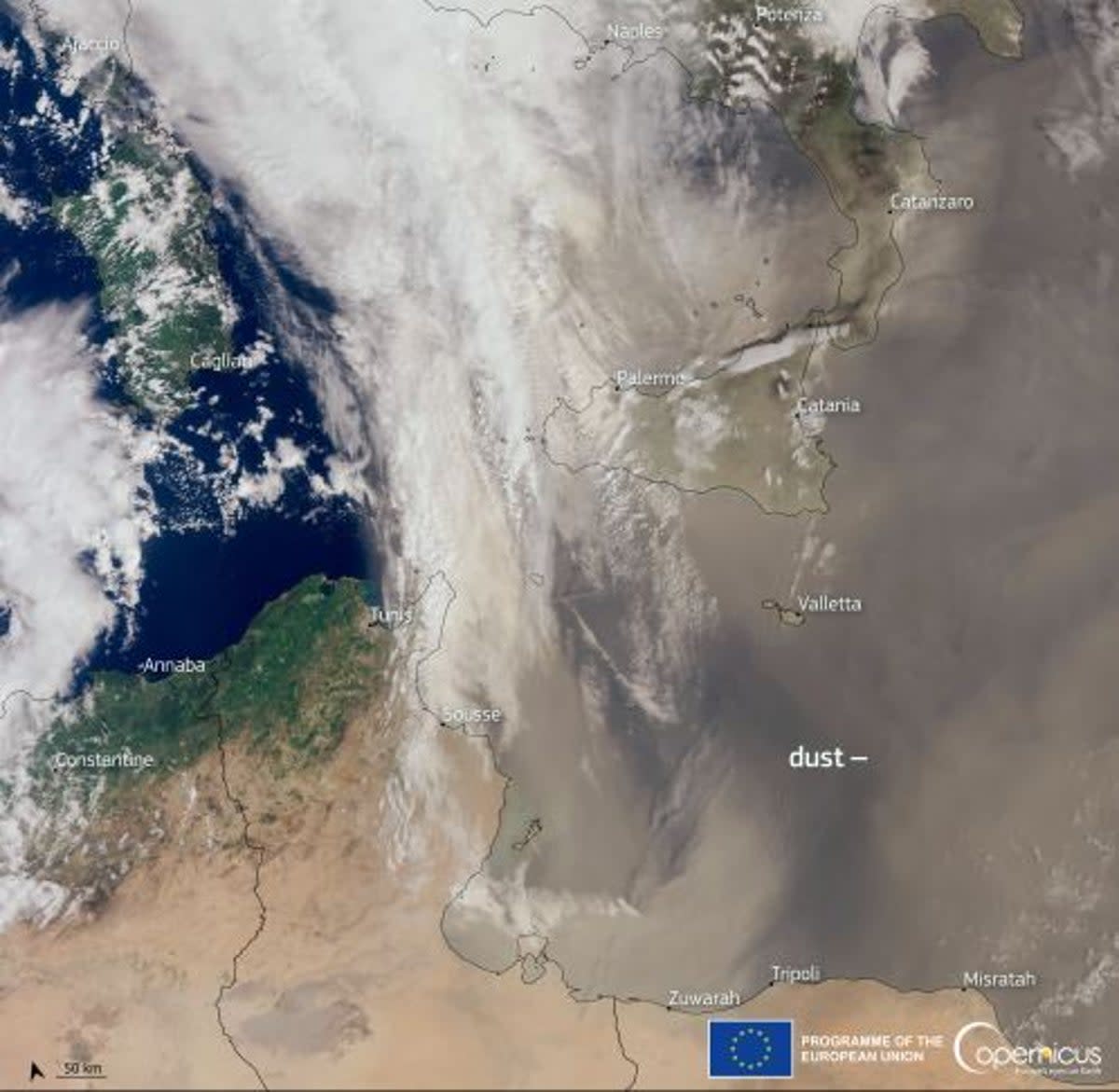Saharan dust cloud causes air pollution across southern Europe

A giant dust storm from the Sahara Desert is covering much of southern and eastern Europe, leaving Mediterranean holiday hotspots such as Greece and Malta with air pollution up to 10 times recommended levels.
The dust cloud “has negatively impacted the air quality in affected countries and may cause restricted visibility, and mud rain, a mixture of rain and dust,” said EU monitoring service, Copernicus.
It comes after a similar dust cloud enveloped the Iberian peninsula last week, affecting Spain and Portugal.
Images from the Sentinel-3 satellite show the dust cloud hovering over southern Italy, Malta, Greece, Libya, and Tunisia.
There was reduced visibility in Athens, and authorities on the Greek island of Crete issued a health alert for airborne particles well in excess of 50 micrograms per cubic metre.
Individuals with respiratory issues, young children, and the elderly, were advised to stay indoors where possible.
Μέχρι και την Βαλτική έχει φτάσει η σκόνη σήμερα , καλύπτοντας παράλληλα μεγάλο μέρος της Κεντρικής και ανατολικής Ευρώπης.
Υποχωρούν από το απόγευμα της Πέμπτης οι υψηλές συγκεντρώσεις σκόνης, ενώ η νέα μεταφορά που προβλέπεται στις αρχές της ερχόμενης εβδομάδος θα είναι… pic.twitter.com/jp8vdVl3rs— Theodoros Kolydas (@KolydasT) March 28, 2024
Theodoros Kolydas, director of Greece’s National Meteorological Centre, said the pollution and air particles should clear in the coming days as the wind direction changes.
“The dust has even reached the Baltic today, while covering a large part of Central and Eastern Europe,” he tweeted.
One Greece resident described the thick air caused by the phenomenon, saying: “It’s like the air is full of custard powder.”
The Afrikaniki skoni (African dust) is upon us in Greece, gloomy and suffocating. Temps reached 32C in Crete yesterday as storms of up to 100 million tons of fine sand swirl hundreds of kilometres from North Africa. It's like the air is full of custard powder. 😷 📷InGr pic.twitter.com/02nwKCMdFd
— Nomadpossum 🐟🇬🇷 🇦🇺 (@nomadpossum) March 28, 2024
The Met Office at the RAF base in Akrotiri, Cyprus, tweeted a satellite picture showing thick high cloud (red) approaching the island from the west.
Here's a current RGB sat pic across the Med showing thick high cloud (red) approaching #Cyprus from the W
You can also see dust (pink to magenta colour) coming off the N African coast where visibilities are reported to be 5-15 km
Ⓒ Crown Copyright, Met Office, Data: EUMETSAT pic.twitter.com/HrA7bt1RZR— Met Office Akrotiri (@MetOAkrotiri) March 26, 2024
Visibility was reduced to between three and nine miles by the dust particles, it said.
In Malta, particulate levels reached 514 micrograms per cubic metre on Wednesday morning, according the Times of Malta. Guidelines by the World Health Organisation say that levels should not exceed an average of 45 over a 24-hour period.


